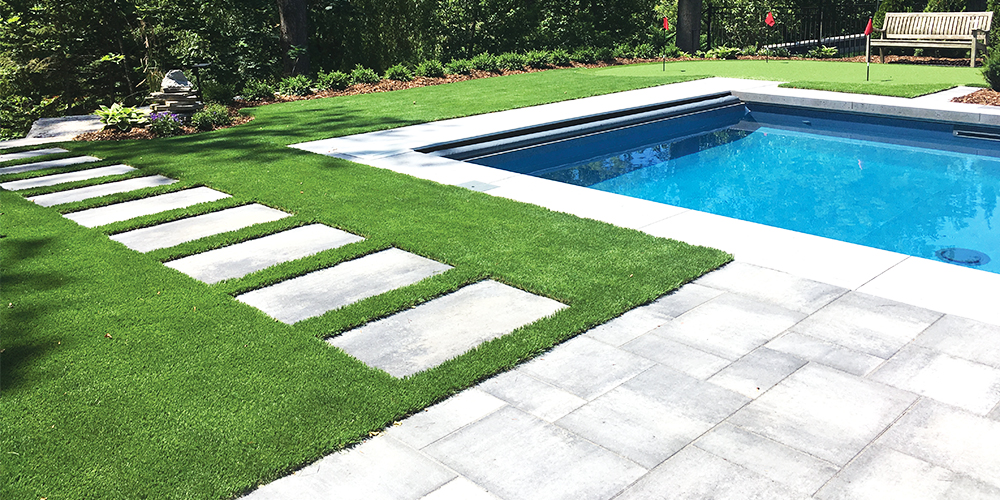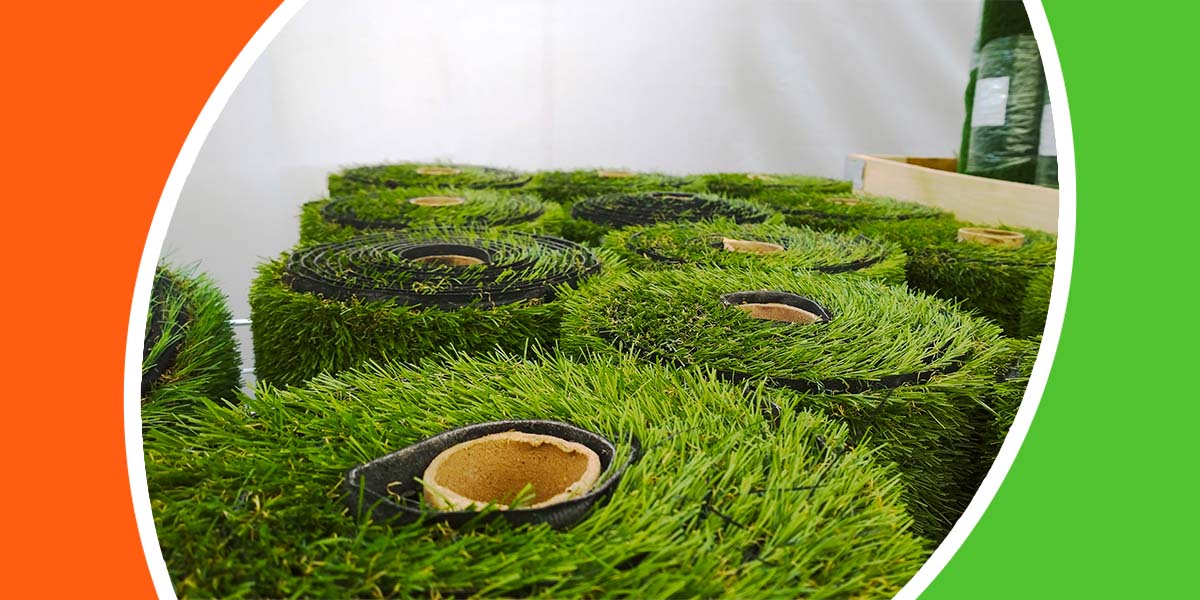Highly-Ranked Phoenix Turf Companies Specializing in Synthetic Grass Options
Highly-Ranked Phoenix Turf Companies Specializing in Synthetic Grass Options
Blog Article
Explore the Environmental Benefits of Opting for Artificial Turf Solutions
The adoption of synthetic turf options presents a compelling opportunity to address pressing environmental challenges. By dramatically decreasing water use and minimizing the application of damaging chemicals, these alternatives not just promote sustainable landscaping yet also safeguard regional communities.
Water Conservation Advantages
Among one of the most considerable benefits of synthetic grass is its capability to conserve water. Typical grass lawns need considerable irrigation, especially in locations vulnerable to drought or water restrictions. In comparison, man-made turf does not need watering, substantially minimizing the total demand for water sources. This attribute is especially helpful in dry regions where water deficiency is a pressing concern.
By eliminating the need for regular watering, synthetic turf adds to lasting landscape techniques and aids reduce the ecological impact of extreme water usage. The conservation of water expands to the reduction of overflow, which can lead to soil erosion and river air pollution.
Additionally, the setup of synthetic turf enables towns and home owners to allocate water resources more effectively, concentrating on crucial uses such as alcohol consumption water and farming. The shift towards synthetic grass not just advertises liable water usage however likewise lines up with more comprehensive ecological objectives targeted at maintaining natural deposits.
As areas progressively prioritize sustainability, the water conservation benefits of synthetic grass provide an engaging case for its fostering in property and commercial landscaping tasks.
Minimized Chemical Use
The change to fabricated grass significantly decreases the dependence on chemical therapies frequently utilized in all-natural turf maintenance. Conventional grass administration commonly entails the application of plant foods, pesticides, and herbicides to advertise growth and control bugs. These chemicals can pose threats to human wellness, regional wild animals, and the atmosphere, adding to dirt and water contamination.
In contrast, fabricated turf removes the demand for these damaging materials. By minimizing the release of synthetic substances into the community, artificial grass promotes much healthier dirt and water systems.
Additionally, the absence of chemical drainage connected with artificial grass installations aids shield neighborhood rivers from contamination, sustaining water life and preserving biodiversity. Phoenix turf companies. As communities increasingly focus on lasting techniques, going with synthetic lawn presents a sensible service that straightens with environmental preservation goals. Via this shift, building proprietors can delight in lush environment-friendly areas without compromising ecological wellness, paving the means for a more lasting future
Reduced Carbon Footprint

Furthermore, the installment of synthetic grass can lead to considerable water preservation. Natural lawns need substantial amounts of water for irrigation, which not only contributes to the carbon impact related to water extraction and treatment but likewise strains regional water resources. In contrast, synthetic turf needs marginal upkeep, calling for no watering, therefore dramatically decreasing water usage and its associated power costs.
Furthermore, the longevity of synthetic grass contributes to its lower carbon impact. With a lifespan of as much as 15 years or more, the demand for regular replacements is lessened, resulting in less waste and reduced power consumption in manufacturing and taking care of conventional lawn options. Overall, synthetic grass presents a sustainable alternative for ecologically mindful landscaping.
Environment Preservation
Habitat conservation is a critical factor to consider in the dispute reference over landscaping choices, particularly when contrasting artificial turf to all-natural lawn. All-natural turf lawns often require considerable upkeep, consisting of making use of herbicides, chemicals, and plant foods, which can negatively impact regional communities. These chemicals can leach into the soil and rivers, harming indigenous flora and fauna and interrupting local habitats.
Man-made lawn removes the need for hazardous chemicals, thereby securing close-by wildlife and preserving the honesty of bordering communities. The setup of synthetic lawn can lead to the conversion of previous lawn areas right into even more biodiverse landscapes, such as pollinator gardens or indigenous plant areas, which can sustain regional wildlife.
Eventually, the change to man-made turf not only preserves water and lowers maintenance efforts but additionally cultivates a more unified partnership in between human activities and the native environment, advertising habitat conservation while doing so.
Long-Term Sustainability
Long-term sustainability is an essential aspect in examining the benefits of man-made grass over traditional yard yards. One of one of the most significant benefits of artificial grass is its longevity; it can last approximately 15-20 years with marginal maintenance, whereas all-natural grass calls for frequent reseeding and substitute. This longevity reduces the demand for consistent sources, such as water, fertilizers, and chemicals, which are essential for keeping a healthy turf yard.
Additionally, man-made lawn adds to a decrease in carbon exhausts related to yard treatment devices. Traditional grass usually require gas-powered lawn mowers, trimmers, and blowers, all of which contribute site to air contamination. Phoenix turf companies. On the other hand, synthetic grass eliminates the requirement for such tools, advertising a cleaner environment
Additionally, the manufacturing of man-made lawn progressively makes use of recycled materials, enhancing its sustainability profile. As makers adopt environment-friendly practices, the ecological impact of synthetic lawn continues to decrease.

Verdict
The adoption of man-made turf options offers considerable environmental benefits, including substantial water preservation, decreased dependence on unsafe chemicals, and a reduced carbon footprint. Additionally, man-made lawn help in maintaining natural habitats by reducing land disturbance and promoting lasting sustainability through the usage of long lasting products. Collectively, these aspects highlight the capacity of synthetic grass to contribute positively to environmental health and provide a feasible alternative to traditional landscape design methods in a progressively resource-conscious globe.
In contrast, synthetic grass does not need watering, substantially minimizing the general need for water resources. By minimizing the launch of synthetic substances right into the environment, synthetic lawn promotes much healthier soil and water systems.
Moreover, the installation of artificial lawn can result in substantial water conservation. In hop over to these guys comparison, man-made grass requires marginal maintenance, requiring no watering, therefore considerably minimizing water use and its linked power expenses.

Report this page